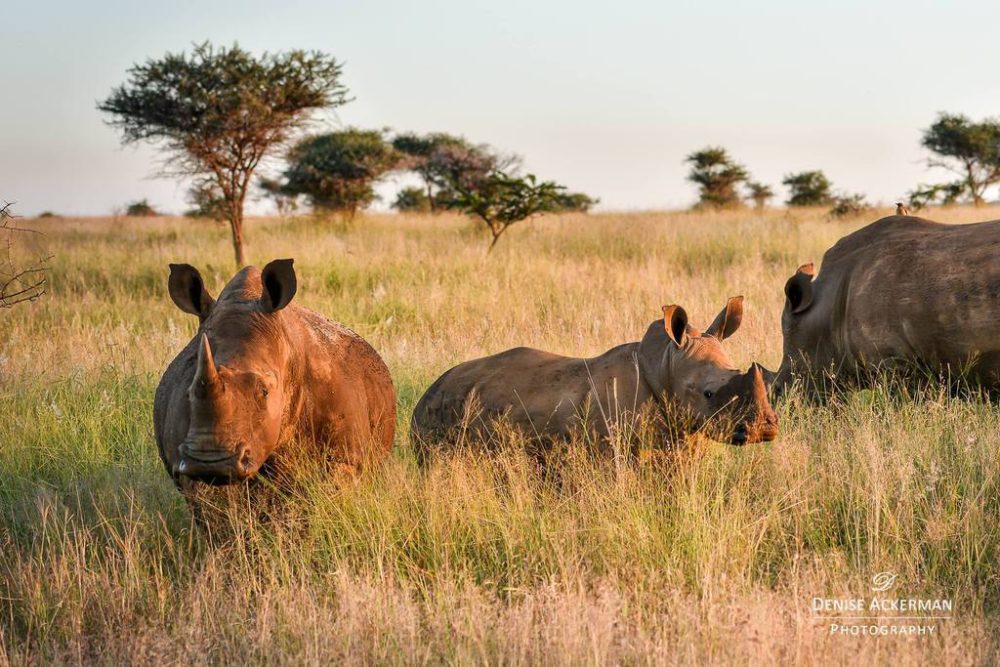27 February 2017: The South African Ministry for Environmental Affairs has today released rhino poaching statistics for 2016, showing a country-wide decline of 10.3% year-on-year, but increased incidence in areas outside Kruger National Park – pointing to a worrying rise in country-wide poaching gangs. Alarmingly, these groups are likely to benefit from the proposed legislation of a domestic horn trade.
According to official statistics released on 27 February 2017, a total of 1,054 rhino were poached in 2016, compared to 1 175 in the same period for 2015; representing a decline of 10.3%. Although 2016’s overall country-wide decline in rhino poaching is cheering, the rise in regions outside Kruger continues to be cause for great concern, as these developments suggest that poaching networks are increasingly expanding their operations across the country and growing in sophistication.
Save the Rhino International’s key concern, however, is a draft legislation recently announced by the Minister for Environment, Edna Molewa, which would allow a domestic trade in South Africa. Under the proposed changes, a foreign citizen visiting South Africa would be able to obtain a permit to export a maximum of two rhinos per year, meaning the South African authorities would be required to police both a legal and illegal trade – with huge potential for leakage onto the black market.
The move comes as an extraordinary volte-face, given that South Africa declined to submit a proposal to The Convention of International Trade in Endangered Species, known as CITES, in the run up to September’s Conference of the Parties (Cop) in September 2016 to lift the ban on the international rhino horn trade, a ban in place since 1977. This decision was informed by an 18-month inquiry into whether a legal horn trade could be effectively enforced. A committee of experts advised the government against, but their findings have yet to be published. The new proposal also jeopardises pending court cases against poaching syndicates and alleged kingpins of the trade such as Hugo Ras and Dawie Groenewald.
Save the Rhino International’s Director, Cathy Dean, who is also a member of the International Union for the Conservation of Nature Species Survival Commission (IUCN SSC) African Rhino Specialist Group, says:
A domestic trade in rhino horn is not in the interests of the rhino – it is a financially motivated decision. Whilst we have every sympathy with private owners struggling to afford anti-poaching, we have grave concerns about the direction taken by the South African government. Since there is virtually no consumer market for rhino horn in South Africa, it is clear that this legislation poses a huge risk for leakage into the black market, and could prove completely unpoliceable as criminals exploit weak, over-stretched enforcement agencies.
-Ends-
Notes to Editors
Save the Rhino International’s vision is for all five species to thrive in the wild for future generations. Our mission is to collaborate with partners to support endangered rhinos in Africa and Asia. Save the Rhino does this by the following strategies:
- Raising funds to protect and increase rhino numbers and population distribution in African and Asian range states
- Facilitating the exchange of technical support and information between rhino conservation stakeholders
- Ensuring that local communities in key rhino areas benefit from employment, capacity building, education, outreach and the sustainable use of natural resources
- Developing and delivering behaviour-change campaigns to reduce the demand for rhino horn in consumer countries
- Raising awareness throughout the world of the need for and importance of rhino conservation
- To find out more please visit www.savetherhino.org (UK registered charity 1035072).
The current poaching crisis
- The new poaching crisis has been widely attributed to demand from a growing Vietnamese urban elite who consume rhino horn as a luxury good/ status symbol, as well as for use in Traditional Chinese Medicine in both Viet Nam and China
- Contrary to popular belief, rhino horn is not used as an aphrodisiac
- According to research conducted by TRAFFIC, an archetypal rhino horn consumer in Viet Nam is a wealthy, middle aged businessman who uses rhino horn to increase his social standing, often imbibing the ground product mixed with water, in a social setting.
- As poachers have become more armed and sophisticated, the costs of protecting rhinos have also exponentially grown
- Kruger National Park is home to largest population and concentration of rhino on the planet
- Funding and resource has helped Kruger turn the tide, but increasingly poachers are moving beyond Kruger into new frontlines, such as Kwa-Zulu Natal, or beyond South Africa’s borders
African rhinos
- Africa was once home to rhino numbers in the hundreds of thousands, but the Colonial-era ushered the first great decline in population to due to large-scale hunting and habitat loss as a result of agricultural and urban developments.
- The next poaching crisis reached a peak in the 1970s and 80s. A concerted effort of law enforcement in rhino range states and demand countries, demand reduction campaigns and the efforts of conservationists saw rhino populations stabilise and grow throughout the 1990s and early 2000s.
- There are five species of rhino worldwide, of which two live in Africa: the black rhino and the white rhino.
- Black rhinos are “Critically Endangered” and number around 5,000 individuals.
- White rhinos are classed as “Vulnerable” with a population of approximately 20,000, mostly in South Africa.
CITES
- In 1977 CITES Parties voted to ban the international rhino horn trade, and such are also encouraged member states to adopt domestic measures to limit the trade.
- In September 2017, CITES Parties convened in Johannesburg for the Conference of the Parties 17.
- South Africa had been expected to submit a proposal to lift the international ban. To the surprise of many commentators, South Africa refrained from doing so, but Swaziland made their own, last-minute proposal, which failed to achieve the required two-thirds majority.









